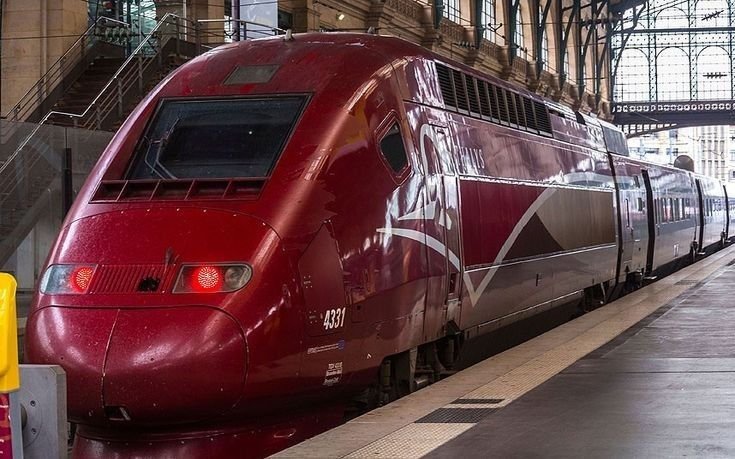Natural disasters, such as hurricanes, demand immediate and strategic action to minimize damage and save lives. This article addresses the question: did trains leave the hurricane path earlu, delving into the preparedness of rail systems, the challenges faced, and the implications for future disaster responses.
Table of Contents
Understanding Hurricane Preparedness for Railways
Hurricanes pose a significant risk to transportation systems, including railways. These powerful storms bring high winds, torrential rain, and flooding, all of which can disrupt train operations. The question, did trains leave the hurricane path earlu, highlights the importance of timely evacuations and strategic planning to protect rail assets and passengers.
Railway operators must collaborate with meteorological agencies to monitor storm developments. The earlier the warning, the more time authorities have to reroute trains, evacuate passengers, and secure critical infrastructure. But what determines whether trains can truly leave the hurricane path in time?
Factors Influencing Train Evacuations During Hurricanes
To answer did trains leave the hurricane path earlu, we need to explore the factors that affect decision-making and evacuation operations:
- Forecast Accuracy: The reliability of hurricane forecasts plays a crucial role. If meteorologists predict the storm’s path and intensity accurately, rail operators can make informed decisions about rerouting or halting services.
- Infrastructure Limitations: Some rail lines may lack alternate routes, making it difficult for trains to avoid the storm. This raises the question of how flexible rail systems are in responding to emergencies.
- Passenger and Crew Safety: Ensuring the safety of passengers and crew is the top priority. Evacuation plans must prioritize safe disembarkation points and shelters.
- Communication Systems: Effective communication between rail operators, emergency management teams, and passengers is vital for executing timely evacuations.
These factors collectively determine the ability to answer did trains leave the hurricane path earlu affirmatively.
Historical Examples: When Trains Faced Hurricanes

Several historical incidents shed light on whether did trains leave the hurricane path earlu in past hurricanes. Examining these cases provides valuable lessons:
Hurricane Katrina (2005)
When Hurricane Katrina devastated the Gulf Coast, rail operations faced unprecedented challenges. Amtrak and freight trains were halted as the storm approached. However, questions arose about whether enough was done to evacuate trains and their passengers early. Many rail lines suffered extensive damage, delaying recovery efforts.
Hurricane Harvey (2017)
Hurricane Harvey’s massive flooding in Texas tested the preparedness of railway systems. Freight trains were rerouted, but some operations were disrupted due to limited time for evacuation. This incident reignited the debate over did trains leave the hurricane path earlu and what measures could improve future responses.
Hurricane Ida (2021)
Hurricane Ida demonstrated improved forecasting and communication, allowing rail operators to take proactive measures. Trains were rerouted, and services were suspended in advance of the storm, showing progress in addressing the challenges posed by hurricanes.
Challenges in Evacuating Trains During Hurricanes
Despite advancements, several challenges persist in answering did trains leave the hurricane path earlu effectively:
- Limited Timeframes: Hurricanes can change course rapidly, leaving limited time for evacuation.
- Infrastructure Damage: Flooded tracks, downed power lines, and debris can impede train evacuations.
- Coordination with Other Systems: Railways must coordinate with road, air, and sea transport systems to ensure a seamless evacuation process.
Improving Railway Preparedness for Hurricanes
To ensure future answers to did trains leave the hurricane path earlu are positive, rail operators must adopt comprehensive preparedness strategies:
- Enhanced Forecasting Tools: Leveraging advanced meteorological models can improve the accuracy of hurricane predictions.
- Flexible Rail Networks: Investing in alternate routes and adaptable infrastructure can provide more options for rerouting trains.
- Disaster Drills: Regular drills can help operators, crews, and emergency responders stay prepared for hurricane scenarios.
- Public Awareness Campaigns: Educating passengers about evacuation procedures can ensure swift action during emergencies.
The Role of Technology in Hurricane Preparedness
Modern technology plays a vital role in answering did trains leave the hurricane path earlu effectively. Innovations such as real-time tracking systems, automated alerts, and AI-driven decision-making tools can enhance preparedness and response efforts. For example:
- Real-Time Monitoring: Satellite and radar systems provide up-to-date information on storm movements, allowing operators to make quick decisions.
- AI Algorithms: AI tools can analyze historical data to predict the impact of hurricanes on specific rail lines.
- Communication Platforms: Mobile apps and digital signage can keep passengers informed about evacuation plans and service updates.
Collaboration Among Stakeholders
Successfully addressing the question did trains leave the hurricane path earlu requires collaboration among multiple stakeholders:
- Government Agencies: Federal and state authorities must provide timely warnings and resources to support rail operations.
- Railway Companies: Operators must prioritize safety and develop comprehensive evacuation plans.
- Emergency Services: First responders play a critical role in ensuring the safety of passengers during evacuations.
- Communities: Local communities must stay informed and cooperate with evacuation efforts.
Lessons Learned and Future Directions

Past experiences highlight the need for continuous improvement in hurricane preparedness. The question did trains leave the hurricane path earlu serves as a reminder of the importance of early action and robust planning. By learning from past incidents and leveraging technology, rail operators can enhance their ability to respond to hurricanes effectively.
Also read Coomersu: A Comprehensive Guide to Understanding Its Significance
Conclusion
The answer to did trains leave the hurricane path earlu varies depending on the specific circumstances of each hurricane. While progress has been made, challenges remain in ensuring timely evacuations and minimizing disruptions. By investing in advanced forecasting tools, flexible infrastructure, and collaborative efforts, railways can better prepare for future hurricanes and ensure the safety of passengers and crew.
As climate change increases the frequency and intensity of hurricanes, the need for proactive measures becomes even more critical. Addressing the question did trains leave the hurricane path earlu requires a commitment to innovation, preparedness, and collaboration. Only through these efforts can we achieve a safer and more resilient transportation system in the face of natural disasters.


